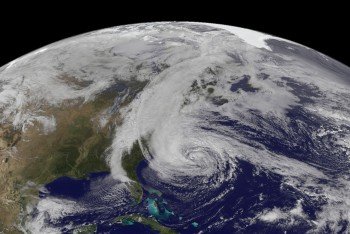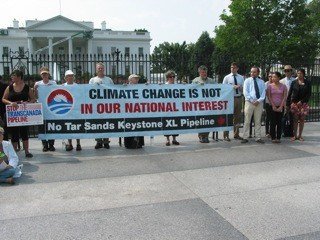Ten Turkeys for Thanksgiving
by Brent Blackwelder
 This Thanksgiving is a good time to spot the Golden Fleece Turkey, a bird that epitomizes economic irrationality and environmental destruction. This remarkable breed pollutes air and water and wastes tax dollars, while scamming the public in the process. Although known for its camouflage, especially its ability to hide wrongdoing, the Golden Fleece Turkey regularly treats birdwatchers to astonishing displays of stupidity. Such birds could not exist in a sustainable economy, but the present economic climate provides an ideal habitat, and they’re spreading like many other invasive species. Below are 10 recent sightings of the Golden Fleece Turkey.
This Thanksgiving is a good time to spot the Golden Fleece Turkey, a bird that epitomizes economic irrationality and environmental destruction. This remarkable breed pollutes air and water and wastes tax dollars, while scamming the public in the process. Although known for its camouflage, especially its ability to hide wrongdoing, the Golden Fleece Turkey regularly treats birdwatchers to astonishing displays of stupidity. Such birds could not exist in a sustainable economy, but the present economic climate provides an ideal habitat, and they’re spreading like many other invasive species. Below are 10 recent sightings of the Golden Fleece Turkey.
(Note: Wisconsin Senator William Proxmire presented Golden Fleece Awards in the 1970s and 1980s for taxpayer boondoggles. This Daly News entry is dedicated to his memory.)
1. Animal Factory Slums
Sometimes masquerading under the name of Confined Animal Feeding Operations (CAFOs), these gigantic lots keep thousands of animals in filthy, cramped quarters. They produce over 500 million tons of manure annually, some of which spills because lagoons leak and pipelines break. The spills cause massive fish kills downstream and spread dangerous bacterial contamination. Up to 70% of the antibiotics in the US are used on animals in CAFOs, thereby aggravating antibiotic resistance and jeopardizing one of the miracles of modern medicine. Emissions from these animal slums, tainted with putrid sulfur dioxide, sicken rural neighbors. “Cheap” food from CAFOs isn’t such a bargain when you add up all the health costs.
2. Continued Subsidies for Nuclear Reactors
In the wake of the Fukushima disaster in Japan (a tragedy that’s still unfolding with more bad news each month), there is a real possibility that damages could top a trillion dollars. Despite such concerns, the nuclear industry keeps fleecing America. The US Congress and the Obama Administration continue to support loan guarantees for new nuclear reactors and to provide liability insurance for nuclear reactor accidents. If reactors are as safe as the industry alleges, one would think that private insurance companies would be eager to make some money here. As we have seen from Japan this year, there is a lot we are not being told, and there’s still a high potential for accidents.
3. The Keystone XL Tar Sands Pipeline from Canada to the Texas Gulf
The extraction of oil from tar sands takes a lot of energy and leaves behind a polluted landscape that native people of Alberta have to live with. The pipeline would pose a threat to every river it crossed en route to the Texas coast. Embarrassed by revelations of shady dealings at the State Department and the announcement of an Inspector General investigation, the Obama Administration has just delayed a decision on whether to approve the biggest pipeline fleece in history.
4. US Automobiles That Travel 200 Miles Per Hour
Ford and Chevrolet have announced their intentions to produce super-fast cars, capable of speeds between 180 and 200 mph. So much for the goals of saving lives, preventing injuries, and conserving fuel. For the past half century 30-50,000 people have died annually in auto accidents, and hundreds of thousands more have been injured.
5. Offshore Tax Havens
It is estimated that the US Treasury loses $100 billion annually as a result of offshore tax havens. This is about the same amount of money the desperate “Supercommittee” of Congress is scrambling to find for deficit reduction by the November 23 deadline ($1.2 trillion over a decade = $120 billion a year). The two biggest bank recipients of taxpayer bailouts are Citicorp and Bank of America. Citicorp operates subsidiaries in 427 tax havens, and Bank of America does so in 115.
6. Tax-Dodging Corporations
Corporate income taxes provided 35% of federal revenue in 1945, but today that total is just 9%. Some of the world’s best known and most profitable companies (e.g., General Electric) play a variety of accounting games and avoid paying any corporate income taxes. Such companies protest that they are obeying the law, but they don’t say that they are lobbying intensively to keep all the loopholes in place. As a result, the American public is told that it will have to endure massive budget cuts to avoid further increases in government debt.
7. Corn Ethanol Subsidies
75 cents of every tax dollar spent on renewable energy goes to corn ethanol. US taxpayers are shelling out over $6 billion in subsidies each year for the corn ethanol program. Corn is an energy-intensive crop to grow, and it often involves the use of the carcinogenous herbicide atrazine (banned by Italy and Germany in 1990). The Volumetric Ethanol Excise Tax Credit is a shameful subsidy (45 cents per gallon blended) that should be cut. On top of that, life-cycle studies show that corn ethanol fails to ameliorate greenhouse gas emissions.
8. Clean Development Mechanism (CDM)
The United Nations administers the world’s largest carbon offset program, the CDM, created by the Kyoto climate agreement. The objective is to provide credits to projects that offset greenhouse gas emissions. The idea is to develop useful projects that would not be built without such a subsidy. But there’s a problem: the UN is awarding credits worth billions to projects that are already built or being built — large, environmentally unsound dams provide perhaps the most egregious example. The Clean Development Mechanism is better labeled the Filthy Scam Mechanism. As of October almost 2,000 dams (2/3 in China) were in line for billions in tax credits with no guarantee of compliance with standards of the World Commission on Dams.
9. Leaf Blowers
Doesn’t anyone rake leaves anymore or sweep a sidewalk? Throughout the year, leaf blowers spew dust, debris, and noise in neighborhoods all across America. Of the 220 million tons of carbon dioxide emitted by off-road vehicles and equipment, power lawn mowers and leaf blowers generate a surprisingly large amount — 12% or 26 million tons. Often powered by dirty engines, these leaf blowers can be a serious source of air pollution. And with unpleasant noise, sometimes exceeding 85 decibels, they can make sitting on the porch seem like sitting at the end of an airport runway.
10. Corporate CEO Pay
CEO salaries are now a whopping 325 times higher than the average US worker. And the Institute for Policy Studies found 25 companies that paid their CEOs more than they paid in federal income tax.
Decent citizens everywhere should be looking to carve up a Golden Fleece Turkey or two. Happy Thanksgiving!







After all of the negative news and spin in the media conglomerate this week, it is nice to get a smile from this presentation of truth in such a creative way. Thank YOU and a very Happy Thanksgiving as well…to you, your family and your colleagues.
Good list except for the nuclear power item.I’m not sure whether the nuclear industry is that highly subsidized especially when compared with fossil fuels. Who pays for all the damage and casualties caused by coal and gas? The victims,that’s who.
And that is leaving out the immense damage caused already by global warming,let alone what is to come.
Nuclear is the only practical and acheivable option we have for clean base load electricity generation in the time frame we have.The safety and proliferation issues
are much exaggerated by the powerful and noisy antinuclear lobby.The fossil fuel industry are rubbing their hands with glee at the propaganda being disseminated by these clowns.
As for Fukushima,just when do you think a magnitude 9 earthquake with a 15 metre tsunami is coming to a town near you? With the benefit of hindsight the 40 year old reactors at Fukushima were poorly sited.In spite of all the damage there,mainly caused by the tsunami,there has not been one death as a result of radiation – not one.
@Podargus
I’ve asked this question of many of those who say that nuclear is clean and have yet to get an answer:
How do you clean up the mining?
The mining alone makes an oxymoron out of the words ‘clean nuclear’.
seakat,mining of uranium is considerably less polluting than with most other minerals simply because the volume of the waste,which has very low level radioactivity,is less.
Most deposits mined are high grade ore and uranium has a high energy density when enriched so there is less ore to be extracted.
My country,Australia,has several uranium mines which have been worked out.Like any mine they have the usual tailings dumps left behind.These have required no more than the usual precautions with any mineral extraction to prevent contamination of water courses or from dust.
There have been issues at the Ranger mine in the Northern Territory where a very heavy wet season resulted in leakage of water from tailings dams.These breaches of operating conditions were notified and corrected and I have not heard of any adverse effects.
Essentially,uranium mining is no different to any other mining activity in respect to the need for close government supervision and control.There are far more damaging mining activities,such as open cut coal and coal seam gas extraction.And the product is far,far more damaging in its final use than uranium used for electricity generation.
No human activity is free of impact on the environment.Nuclear power,including the mining of the fuel,is by far the cleanest option we have with current and foreseeable technology,and that includes renewables when the infrastructure,resouce input and land area required is taken into account.We haven’t got a lot of time left to make a significant reduction in greenhouse gas emissions before we have runaway climate change.The majority of these emissions come from burning coal and gas for electricity generation.Nuclear is the only proven technology which can make a difference in this area provided it is rolled out at maximum speed.
Thank you Brent Blackwelder for such a diverse list of GFT´s. As for nuclear and mining, the polluted nature of the mining business is discussed in some detail by Jared Diamond. As far as the inevitability of pollution, that is a basic issue of the nature of modern values and the reason for steady state ecological economics. Most modern businessmen and techno-scientists are significantly illiterate of ecological dynamics and principles.
A resounding example of this is Ray Anderson of Interface Carpet, who became ecologically literate after a client´s inquiry, and has since made his company a leader in green production efforts. See his book, Mid-Course Correction, and the Mother Jones interview online, besides clips in the films, The Corporation and The 11th Hour.
As for the state of other electrical generation technologies, the Danish artisans and protesters against nukes in the 1970s founded the modern wind industry, and have generated 100% of their electricity from wind and biofuel in some areas, as have many around Europe and the US, possibly elsewhere, as discussed in part at sites like the Sustainable Cities Network.
Moreover, the Danes, Germans, and British have some amazing examples of co-operative enterprise which in energy, food, finance, and other sectors offers the sound solution to combining social and environmental sustainability. Fair Trade certification offers a fine example of this model, as does the Middelgrunden and Samso projects in Denmark, and Baywind in England. Food co-ops across the US, and credit unions, too, offer additional examples.
Mark Rego-Monteiro,you are either misinformed or deliberately peddling misinformation.
Denmark has never,and probably will never generate 100% of its electricity needs from wind in any significant part of the country.Without a monumentally intrusive and expensive storage system this is impossible.
When the wind generators are not providing enough electricity to meet demand Denmark has to buy power from fossil fuel generators in Germany and,shock horror,nuclear generators in Sweden.